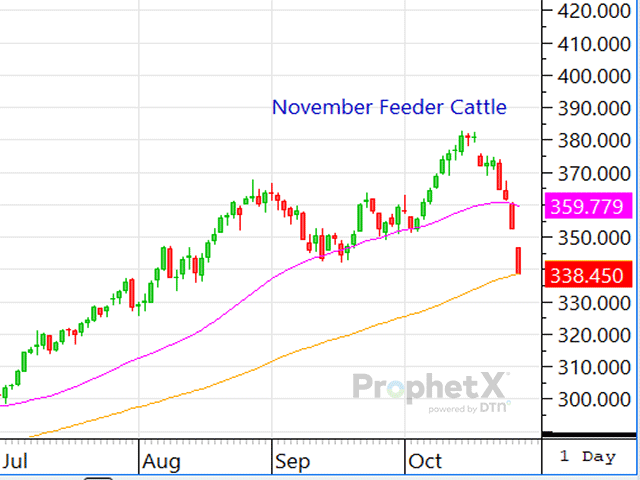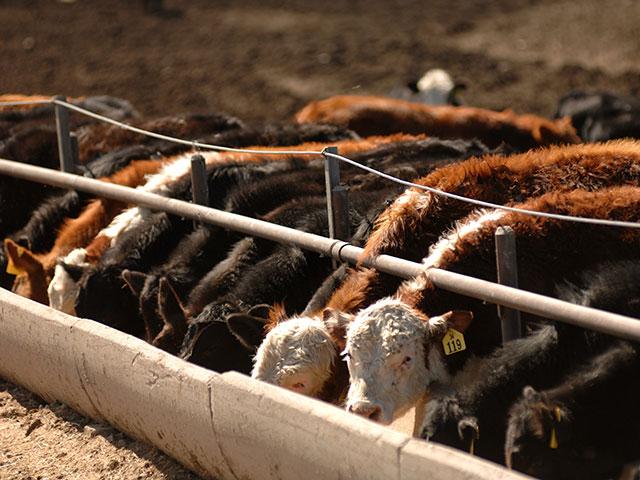
Even with Ag Secretary Rollin's positive remarks, traders still need to see fundamental support before they'll likely advance the contracts anymore.

Even with Ag Secretary Rollin's positive remarks, traders still need to see fundamental support before they'll likely advance the contracts anymore.

I personally believe the reduction of throughput will only push the herd build-back that much further out as yet another level of confidence has been eroded from the market.

Without strong support from boxed beef prices or the fed cash cattle market, the cattle complex could trade steady at best this week as traders yearn for stronger fundamental support.

A combination of technical and fundamental clues suggests the worst should be behind the cattle market with it now time to try to rebuild confidence along with price.

As long as beef demand remains strong as it's been, the board continues to show good faith, and no new unexpected headlines develop that could affect the cattle complex, the market may be slowly gaining some footing following the steep decline it endured just a couple weeks...

Should the markets really be driven by traders' reactions to news headlines as opposed to tangible fundamental developments? While the cattle complex has been losing money during the last seven trading days, boxed beef prices have continued to trade higher.

Comments from the Trump administration have caught beef producers' attention. Prices have been driven by low inventory, and beef producers prefer it to be that way.

It's yet to be seen what the market will do this week; but with traders fully acknowledging the outlook for 2026 is strong, there's still plenty of upside potential.

In today's environment, it seems the increased daily trading limits have had an inflation effect on the market. Seeing a $1.00-move five years ago was normal. Today, the market sees a daily movement of $3.00 to $4.00 with the same $1.00 regard.

It's likely the futures market could struggle again this week because of the seasonal downturn in both boxed beef and fed cash cattle prices.

From Friday's bullish Cattle on Feed report, to the expected announcement that's going to come soon from USDA about revitalizing the American beef industry, traders saw an opportunity to push the cattle contracts sharply higher and didn't waste any time.

With the market's fundamentals not expected to lend much support in upcoming weeks, as seasonally this is a time in which fed prices typically regress and boxed beef prices do too, it's easy to see why the futures complex could be subject to a short season of edginess.

Packers were able to buy a sizeable volume last week in the fed cash cattle market, which likely means that they'll aim to work prices even lower in the weeks ahead.

The market may be trading above anyone's wildest dreams, and while hurdles obviously still loom, there are still reasons to believe even higher prices could be seen.

Between seeing massive gains last week in the cattle complex, to hearing the unsettling news that a positive case of New World screwworm had been detected in a human here in the United States, it wouldn't be unusual to see traders more cautious and timid in their handling of...

USDA's $850 million investment to fight New World screwworm could help prevent losses of billions of dollars in the livestock and general economy.

It's almost presumed that with high prices should come ease and comfort. But that's far from what the cattle complex has seen lately, as nervousness has crept into the futures complex and there's an added level of volatility thanks to the market's historically high prices.

There's an argument to be made that the market should be able to rebound from last Friday's meltdown. On the other hand, there's a strong argument to be made that maybe the futures complex needs a break.

Livestock pioneer Minnie Lou Bradley, first female to win the International Livestock Judging Contest and honored with numerous awards, died recently at 93. The Texas rancher mentored countless people throughout her career.

No one ever expects fed cattle prices to rally through July, as typically it's a time when supplies are heavy, and as boxed beef prices seasonally decline, fed cash cattle prices normally do as well. But feedlot managers have stayed prudent about their marketings and have...
DIM[2x3] LBL[blogs-harringtons-sort-cull-list] SEL[[data-native-ad-target=articleList]] IDX[2] TMPL[news] T[]
DIM[2x3] LBL[blogs-harringtons-sort-cull-list-2] SEL[[data-native-ad-target=articleList]] IDX[5] TMPL[news] T[]